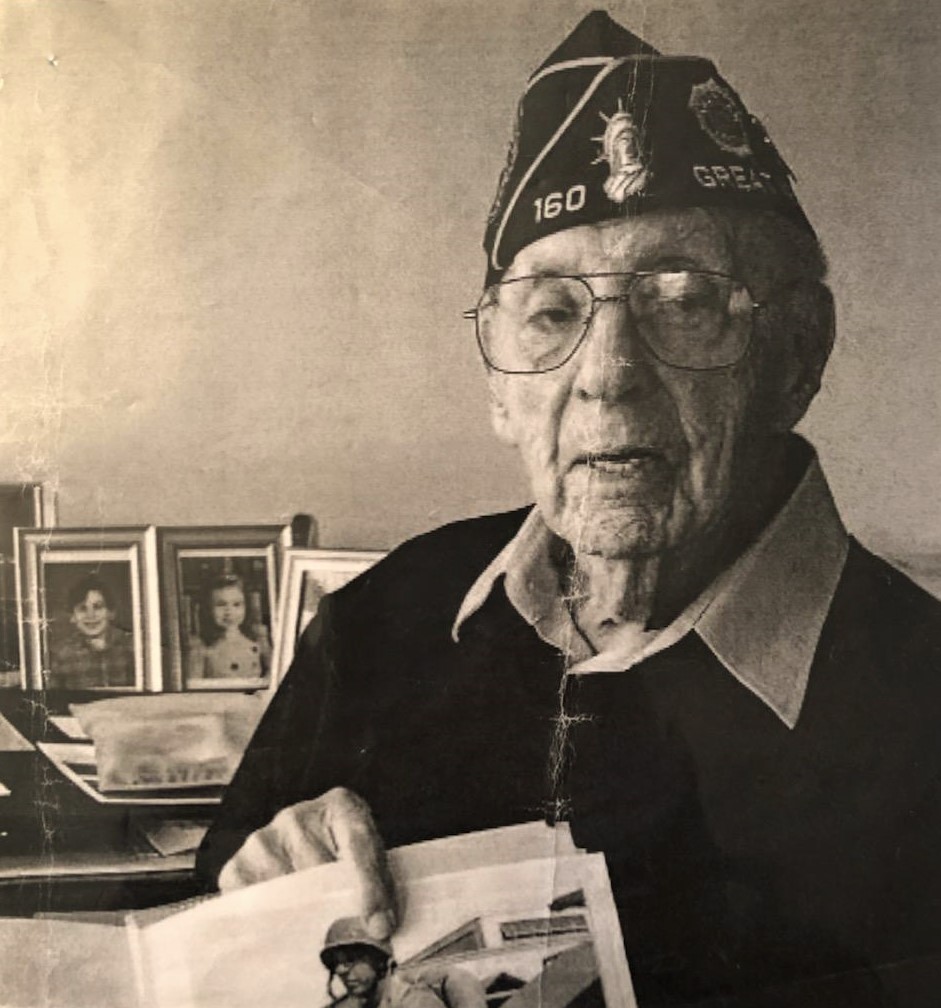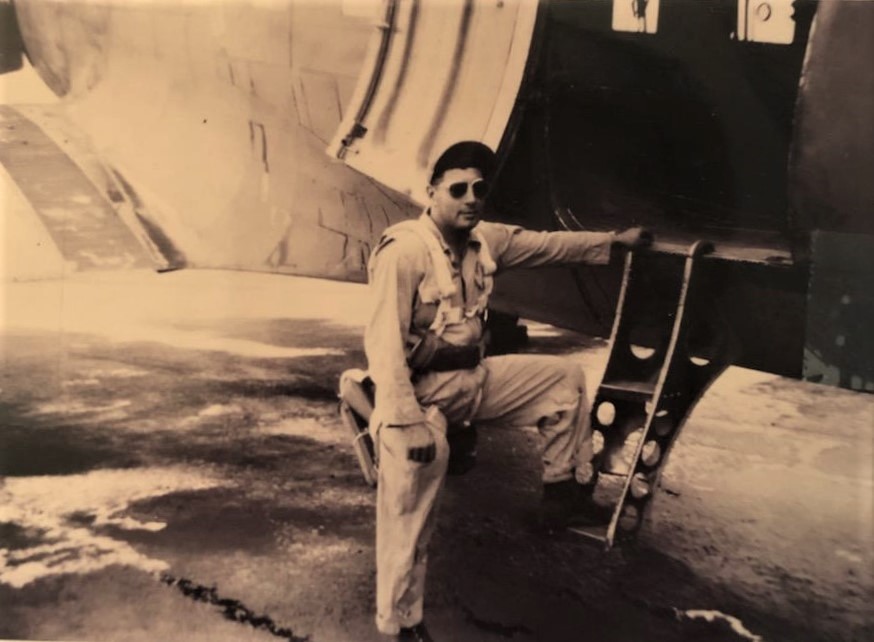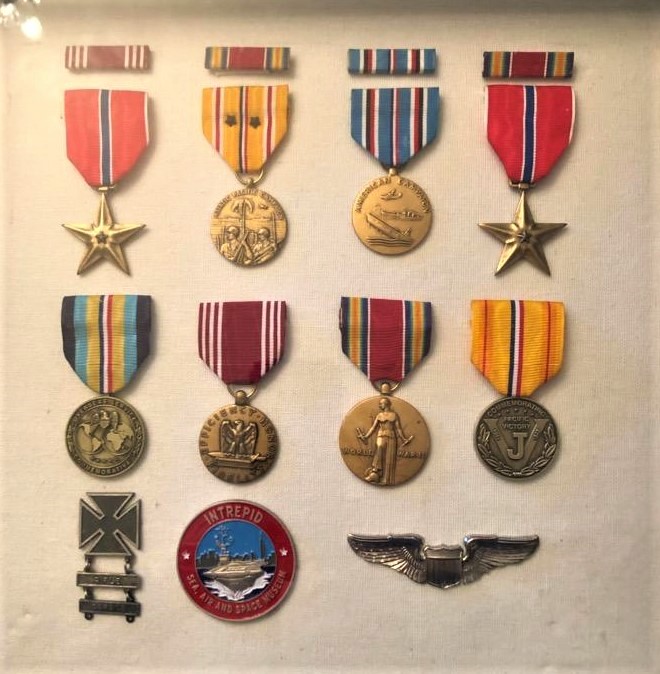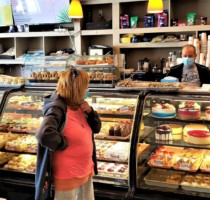By Robert Golomb
Editor’s Note: This is syndicated columnist’s Bob Golomb’s latest column as published in The Published Reporter and other media honoring the life and legacy of highly decorated World War II Veteran, Phil Kahn.
“…having had the opportunity to fight to defend America alongside so many of the most decent and most courageous Americans who have ever lived”, he stated, “has been the greatest honor of my life.”

The world in which Philip Kahn and his twin brother Samuel- the sons of Jewish Polish immigrants- were born in New York’s Harlem Hospital on December 15, 1919 was in the first year of recovery from the most brutal war of then recorded human history. That war, World War 1 (also referred to as the First World War), fought from July 28 to November 11, 1918, involved Germany, Austria- Hungary, Bulgaria and the Ottoman Empire in a global battle against the Allied Forces- Great Britain, France, Russia, Italy, Romania, Japan and the United States (which first entered the conflict in April 1917).
While by that memorable November 11th day that WW1 was won by the Allied Forces (celebrated today as Veterans Day) approximately 37 million people had been killed, including more than 110,000 American service men and women, several months after the war ended, the world was inflicted with even greater suffering caused by still another great catastrophe. However, unlike WW1, that other catastrophe, which was to tragically impact upon the Kahn family, was not the result of the cruelty of humankind but rather the result of the cruelty of nature.
That nature generated mercilessness was bred in the Spring of 1918 by a contagious, deadly strain of the avian influenza virus. Originating in China, the virus quickly spread a plague of misery and death throughout every nation on the planet. By the time this plague, named the “Spanish Flu”, ended in the summer of 1919, it had infected an estimated 500 million people- approximately one- third of the world’s population at the time- and killed between 40-50 million people, including in the range of 675,000 Americans.
One of those Americans was Samuel Kahn, who died from the virus 3 weeks after his birth.
Philip Kahn, whom I interviewed in his daughter’s western Long Island home last week, described how the tragedy haunted him and his family throughout their lives. “From my earliest memories, probably beginning at 3 or 4, I can recall my father and mother discussing their grief over losing my twin to this awful disease”, he remembered. “Their conversations about him remain in my mind. And until this day, I continue to wonder about what type of great person Samuel would have grown up to become, had he lived.”
Fortunately, the family had previously been blessed with two older sons- Jack, born in 1914 and Louis in 1915. Kahn told me that despite the sad lingering memories of the loss of his twin brother, he led a wonderful life growing up in the upper West Side of Manhattan, living with his father, who owned a local bakery, his mother, a homemaker, and his 2 older brothers. “My mother and father, who had immigrated to America years before with their families to escape the growing anti- Semitism in Poland”, Kahn stated, “taught my brothers and me to enjoy every piece of American life. And what enjoyment we had. They took us on day trips throughout every borough in the city. We especially loved Brooklyn, where our most enjoyable summer destination was to the beaches of Coney Island, and then we would take a short walk to eat hot dogs and French fries at Nathans. Most importantly”, Kahn added, “My parents taught us to follow and cherish our Jewish faith and to love and be loyal to the great country of America that had opened its doors of freedom and opportunity to them.”
As the world began moving in the tragic path of a second World War in the 1930’s, Kahn would, before he even reached his 21st birthday, be given the chance to prove that he had learned his parents lesson of love and loyalty to his nation. In Asia, Imperial Japan launched the genocidal conquest of Manchuria, which they followed in 1937 with the even more brutal invasion of mainland China. In Europe, Fascist Italy, extending its reach into Africa, invaded Ethiopia in 1935. And in 1939, in the same beleaguered continent of Europe, Adolph Hitler’s murderous Nazi army invaded Poland- an action that triggered England and France to declare war on Germany. World War 2 had just begun.
Kahn was convinced that America, which had remained neutral in the conflict up to that point, would soon be forced to end that neutrality and enter the war to defeat the German, Italian and Japanese Fascist nations (which upon the signing of an alliance pact in September 1940, became known as the “Axis Powers”). “I would go to the theatre and watch the movie reels showing the Germans murdering thousands of innocent civilians – many of them my Jewish brethren, showing the Japanese committing mass murder in the Pacific, and the Italian army slaughtering people in Africa”, he recalled. “I knew that America, the greatest, strongest and most moral nation in the world, would not sit passively by as the evil forces of the Axis waged a war to take over the world. I knew that the day would soon come when the United States would join the battle to defeat this evil.”
In 1940, 1 year before what he had forecast to be the “day that would soon come”, Kahn enlisted in the United State Army’s Aviation Cadet Pilot Training Program in Fort Gordon, Georgia, which provided him with training on aerial combat. “I was trained to be a flight chief which involved learning about all the aspects of piloting, co- piloting, engineering and grounding a plane.” Still, there was an equally important lesson he learned. “Training together with hundreds of Americans coming from all parts of the country, the kinds of people I had never met before”, he stated, “I saw first- hand how decent and courageous my fellow Americans were, and I made many friends.”
When Japan bombed Pearl Harbor on December 7, 1945, killing 2403 Americans, followed 3 days later with Germany’s declaration of war against America, Philip, as many of those courageous Americans with whom he had trained, was sent off to the battle in the Pacific, while others were sent to Europe. Serving alternately as a co-pilot, crew chief and aerial engineer, Kahn flew 14 perilous missions over Japan, dropping tons of murderous firebombs over heavily civilian populated cities. Kahn, who had been promoted the rank of sergeant by then, told me that these bombings left him with conflicting emotions. “I felt these lethal aerial attacks were a justifiable payback for Pearl Harbor. And I knew that they would help shorten and win the war. But I couldn’t get it out of my mind that we had killed many civilians, including, men, women and children, who did not have a chance to escape our onslaught”, he said.

Kahn told me that during his time in combat he often thought and worried about his older brothers who were soldiers fighting the Germans in Europe. That worry, which of course, was probably shared by every American whose family member was fighting against the Germans, ended on May 7th 1945, the day Germany surrendered to America.
Remembering that day Kahn, who was stationed in an air base in an island off the Japanese mainland at the time, stated, “When I heard the news that Hitler and his genocidal empire had been destroyed, I felt a great sensation of joy and pride as an American. Also, having learned some frightening details about the genocide of European Jewry, I thanked God that American troops had liberated hundreds of thousands of survivors. In addition, I believed the Americans, including my two brothers, who had fought so valiantly in Europe would soon be returning home.”
That belief was premature. Seeing their closest ally go down to defeat did not make the Japanese consider surrender, even as daily American bombing raids were reigning death and destruction throughout their major cities. Realizing the suicidal tenacity of the Japanese, American generals began drawing up plans for a massive invasion of the land of their Asian enemy. Expected to take a year and cost one million American lives, the plan involved transporting most of the troops from Europe, probably including Philip’s brothers, to join American forces in Asia for a massive attack against mainland Japan.
“The plan was a poorly kept secret. We knew that the Americans, possibly my own 2 brothers who had just defeated Hitler, would once again be called upon to possibly die for their country. But we knew, just as those of us fighting in the Pacific, they would be ready, willing able to fight to the death to defeat our enemy”, stated Kahn.
That “fight to the death” never had to be fought. On August 6, 1945, American pilots, flying a B-29 bomber aircraft, dropped an Atom Bomb over the Japanese city of Hiroshima, killing more than 90,000 people; On August 9th, with the Japanese still refusing to surrender, American B-29 pilots dropped a second Atomic Bomb, this one over Nagasaki, killing an estimated 40,000 people. And finally, on August 15th, the Japanese announced their unconditional surrender, putting an end to a war that claimed more than 85 million lives throughout the world, including those of more than 300,000 Americans.
Kahn, who shortly after the surrender co-piloted several reconnaissance missions over these 2 annihilated cities, told me that while the horror of death and destruction he observed from his plane still troubles him to this day, he remains convinced that America’s use of these horrific weapons was justified. “The sight of tens of thousands of dead human bodies and the sight of debris from the obliterated homes and buildings has haunted me to this day”, Kahn lamented. “Yet, I believe that the estimates of the large number of casualties America and their allies would have sustained in an invasion were correct. So, dropping the bombs, I remain convinced, was our only option.”
The highly medal decorated Kahn like, most of his fellow 16 million WW2 American heroes, went on to live a normal life after the war. He got a job, which he kept his entire working life, as an electrician for Local 3 in New York City; married his high school sweetheart, Rose; raised 2 daughters with her; and now has 6 grandchildren and 4 great- grandchildren, with two more soon arrive.

Reminiscing about his one hundred- year life, Kahn, who recently lost his wife after 73 years of marriage, stated, “I feel that I have been a blessed man. My parents and brothers were loving and supportive. My wife was kind and beautiful. My children, grandchildren and great- grandchildren are the joy of my life. And the greatest blessing of all -we live in America.”
While I found Kahn to be extremely modest throughout the interview, he seemed unable to conceal his pride when he noted that his WW2 valor been documented in the Library of Congress in Washington DC, the Cradle of Aviation in Long Island and in the Intrepid Museum in Manhattan. “I have felt very gratified to have my military service recognized by our nation. And having had the opportunity to fight to defend America alongside so many of the most decent and most courageous Americans who have ever lived”, he stated, “has been the greatest honor of my life.”
Robert Golomb is a nationally and internationally published columnist. Mail him at MrBob347@aol.com or follow him on Twitter@RobertGolomb


